Slovenian and Serbian are two distinct South Slavic languages, both belonging to the Indo-European language family. Slovenian is spoken by around 2.5 million native speakers, with the majority residing in Slovenia, while Serbian boasts approximately 9 million native speakers and is primarily spoken in Serbia. Both languages share certain characteristics, such as being morphologically rich and highly inflected. In both Slovenian and Serbian, inflection plays a crucial role and is expressed on various word categories, including verbs, nouns, pronouns, and adjectives. This allows for a vast array of word forms, indicating grammatical features like case, gender, number, and tense.
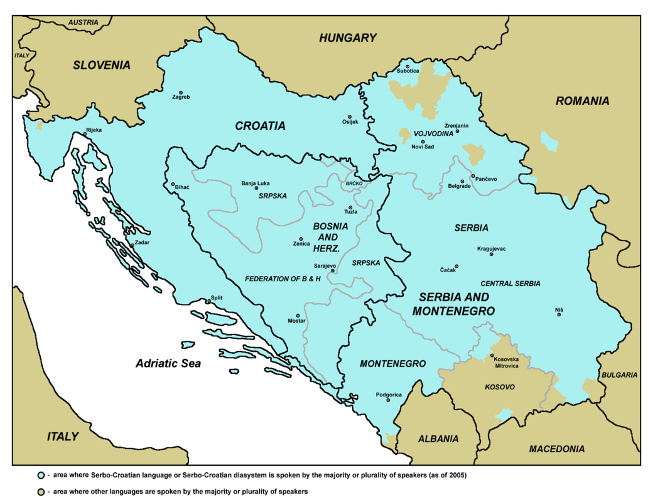
Morphological derivation is another common feature in both languages, achieved through a combination of prefixation and suffixation. By adding prefixes or suffixes to base words, new words can be created, and their meanings can be modified. For instance, in Serbian, the word “prodati” (to sell) can be extended to “preprodati” (to resell), and further, “preprodavati” (to resell iteratively), and “preprodavanje” (reselling – a noun). However, there are also distinct differences between Slovenian and Serbian. In Slovenian, sound changes during word formation are consistently reflected in its orthography, maintaining morphological transparency. In contrast, Serbian’s orthography may not always capture such sound changes fully.
The two languages offer unique opportunities for linguistic research due to their distinct linguistic features. Studying Slovenian and Serbian can deepen our understanding of language processing, word formation, and the cognitive mechanisms involved in comprehending and producing complex linguistic structures. As part of the SAVANT project, research in these languages contributes significantly to advancing our knowledge of the neuro- and psycho-linguistics of a diverse range of languages, enriching our understanding of human language processing capabilities.
Previous neurolinguistic studies in Slovenian and Serbian primarily focused on language performance in patients with language impairments and included some psycholinguistic research. However, there are no neuroimaging studies on morphological processing in Slovenian or Serbian.
The project on South Slavic is led by Prof. Christina Manouilidou (University of Ljubljana), Prof. Rok Žaucer (University of Nova Gorica), Dr. Bojana Ristić, and Karin Kavčič (University of Ljubljana). In this project we focus on a comparison between Slovenian and Bosnian/Croatian/Serbian (BCS).
Slovenian Study
In our Slovenian study, we focused on exploring prefix attachment rules, which allowed us to design a study where semantic violations relied more heavily on semantics compared to previous research within the SAVANT project. We selected prefixes od-, raz-, and vz-, which all attach to state verbs that are not stable, meaning they can be changed, emphasized, or cancelled (e.g., odcveteti ‘finish flowering’, razburiti se ‘get upset’, vzdrhteti ‘to shiver’). For the semantic violations (SemViol), we added these prefixes to stable state verbs (e.g., *razčutiti ‘raz-feel’). For the syntactic violations (SynViol), we added these prefixes to nouns (e.g., *razkolajna ‘raz-medal’). This study design allowed us to gain valuable insights into morphological processing in Slovenian and how it differs from other languages studied in the SAVANT project.
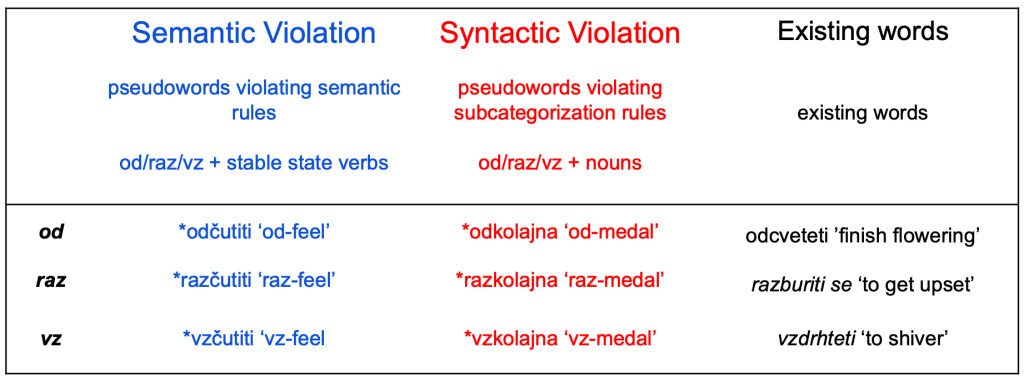
We obtained behavioral data that confirmed the distinction between processing syntactic and semantic information in word formation. However, our preliminary MEG results deviated from previous studies, as we observed a lack of early activation in the temporal lobe during syntactic processing.
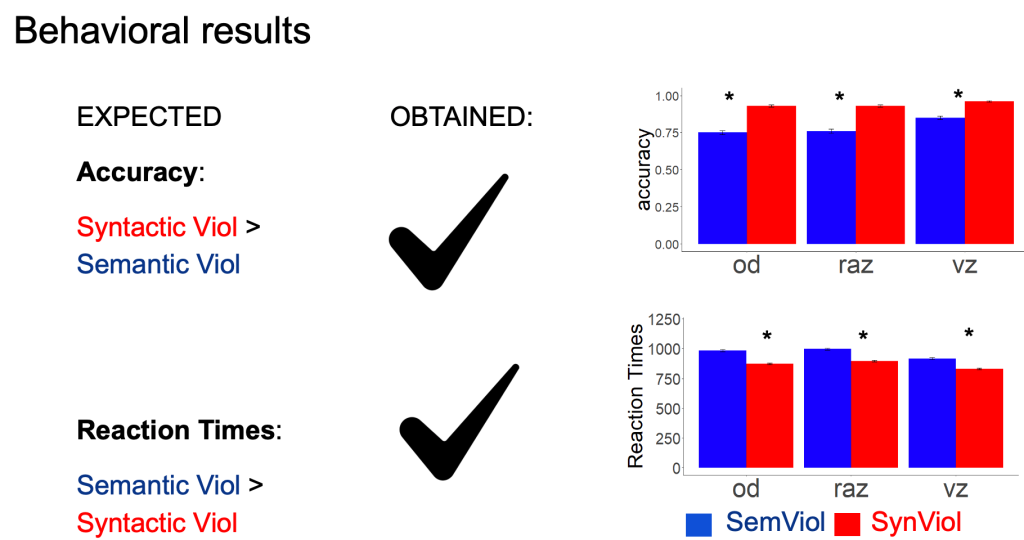
On the other hand, we found later activation in orbitofrontal areas during semantic processing, confirming their role in semantic processes, including sensitivity to inherent verbal properties, such as duration and stability. These findings shed light on the unique characteristics of morphological processing in Slovenian and contribute to our understanding of language processing in this language.
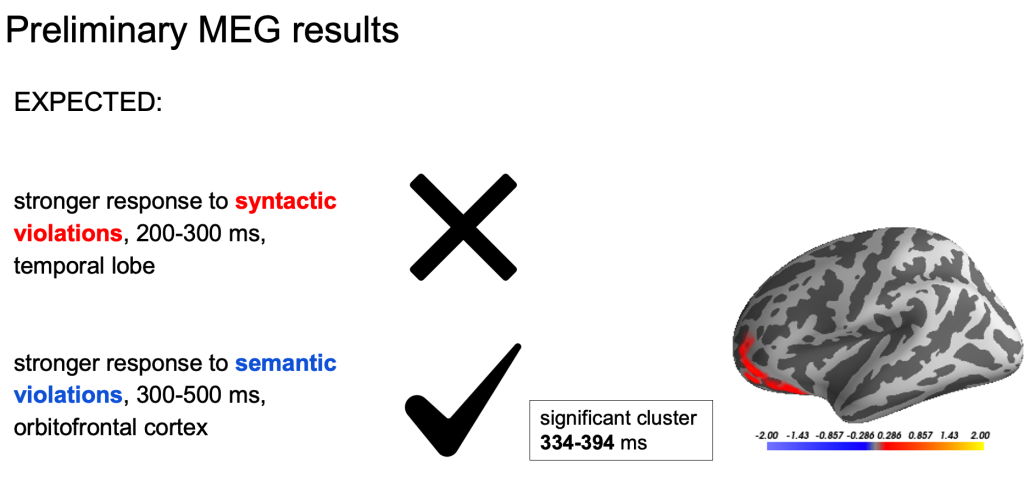
Serbian Study
In our study on Serbian, similar to the Slovenian study, we focused on prefix attachment rules to create a highly comparable study design where semantic violations rely on the semantics of the verbs. For this purpose, we selected prefixes raz-, od-, and uz-, all of which attach to states that are not stable, meaning they can be changed, emphasized, or cancelled (e.g. odsedeti ‘to finish sitting’, razljutiti se ‘get angry’, vzdrhtati ‘to shiver’).
To create semantic violations (SemViol), we added these prefixes to stable states (e.g. *razboraviti ‘raz-dwell’), and we compared them to syntactic violations (SynViol) where we added these prefixes to nouns (e.g. *razmašina ‘raz-machine’). This study design allowed us to investigate how semantic violations are processed in comparison to syntactic violations in Serbian, and it contributes to our understanding of morphological processing in this language. Further analysis of the results is underway to gain deeper insights into the neural mechanisms involved in Serbian morphological processing.
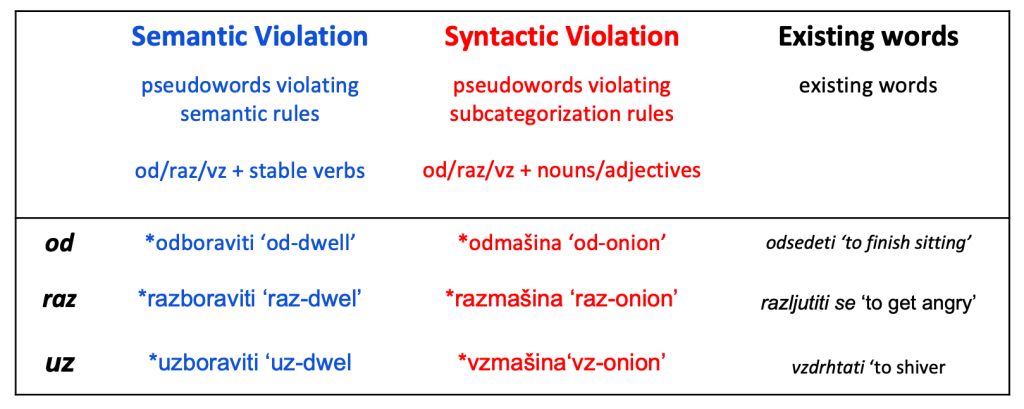
The study of Serbian is advancing our previous knowledge in several ways. Firstly, the behavioral data confirms the distinction between the processing of syntactic and semantic information in word formation, which is consistent with findings from other languages studied within the SAVANT research line. This provides further support for the universality of this distinction in morphological processing across languages.
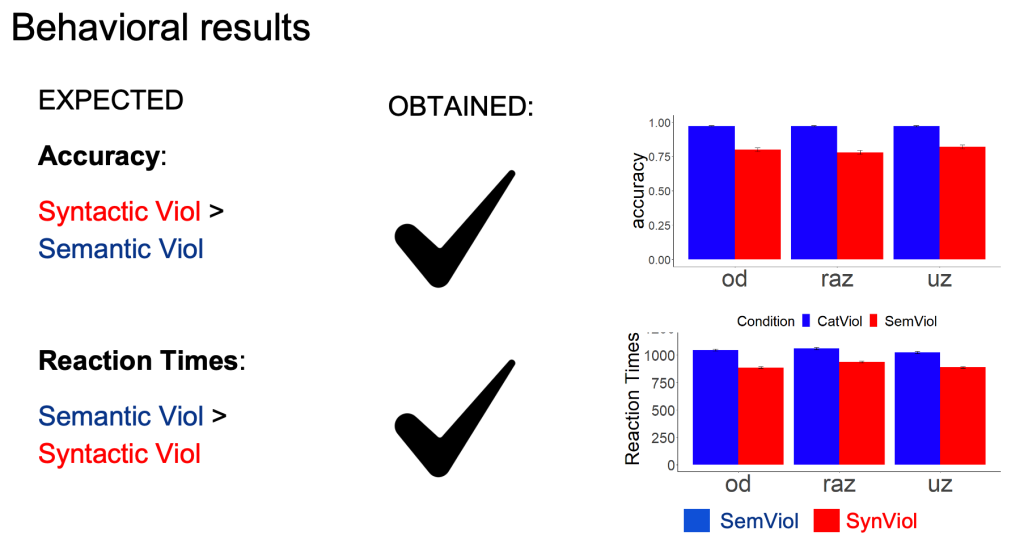
Secondly, the preliminary MEG results in Serbian reveal some interesting patterns. While the syntactic processing shows a lack of early activation in the temporal lobe, which is different from previous studies, it opens up new questions and avenues for understanding how Serbian handles syntactic information during morphological processing. On the other hand, the activation in orbitofrontal areas during semantic processing, though later than in previous studies, still confirms the role of these areas in processing semantic verb meanings, including aspects such as duration and stability. This finding strengthens the evidence for the involvement of orbitofrontal cortex in semantic processing across languages.
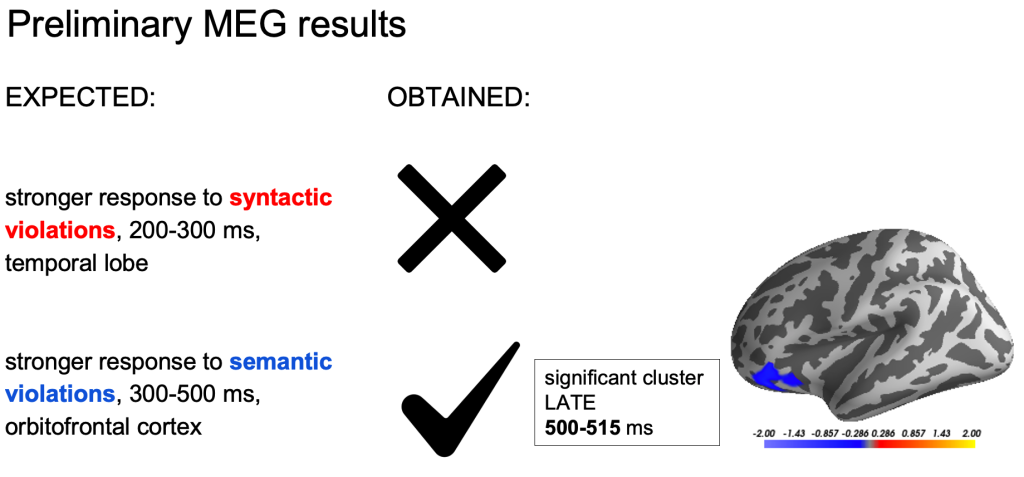
The remarkable similarity in results between Slovenian and Serbian, despite the differences in orthography, is an intriguing observation. It suggests that the fundamental mechanisms of morphological processing may operate similarly across languages with different writing systems. These findings emphasize the importance of studying multiple languages to gain a comprehensive understanding of the neurocognitive processes underlying morphological processing, and they provide valuable insights into the cross-linguistic universality of certain aspects of language processing.
For more information check out our Poster presented at Syntax, Phonology and Language Analysis (SinFonIJA 15)!
